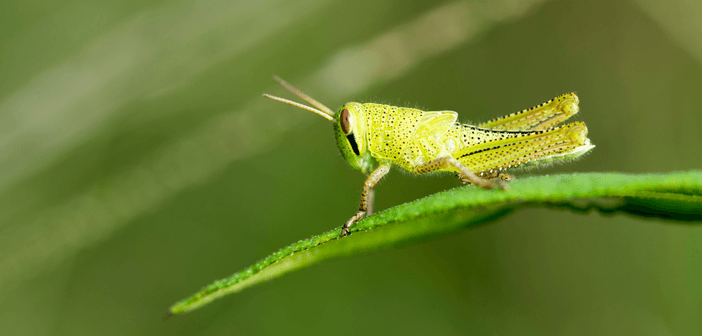Jiminy cricket! Locusts discovered to ‘smell’ cancer in humans

Michigan State University (MI, USA) researchers have discovered that locusts can smell the difference between healthy cells and cancer cells as well as distinguish the various cancer cell lines.
Although locusts will not be directly involved in diagnosis, the researchers have stressed that the research could help provide the groundwork for devices that utilize the sensory neurons of insects to assist in the early detection of cancer only using a patient’s breath.
Despite such devices not being on the immediate horizon, the Michigan researchers are confident that the answer lies within the performance of our natural tools. The success of developed technology augmenting or outperforming people’s natural senses has overshadowed the potential of our own sense organs, especially smell. Technology has been designed to mimic the sense of smell but has not yet been engineered to match the speed, sensitivity and specificity of natural olfaction.
Debajit Saha, assistant professor of biomedical engineering at MSU commented:
“People have been working on ‘electronic noses’ for more than 15 years, but they’re still not close to achieving what biology can do seamlessly.”
Due to the absence of gas-smelling devices, this has created an opportunity for the detection of early diseases–especially cancer–where intervention at an early stage can save lives. If cancer is detected in its early stages, a patient’s chance of survival is around 80% to 90% but dives down to 10% to 20% if only caught by stage IV. Cancer cells create different chemical compounds to healthy cells whilst they’re working and growing and, if these chemicals reached a patient’s airways, the compounds would be possible to detect in exhalation.
Saha added:
“Theoretically, you could breathe into a device, and it would be able to detect and differentiate multiple cancer types and even which stage the disease is in. However, such a device isn’t yet close to being used in a clinical setting.”
Researchers at MSU sought to discover solutions to disease diagnosis within pre-existing organisms such as Locusts, which are more desirable subjects due to the already established understanding of their olfactory sensors, relative neural circuits and their larger size. These features allowed the researchers to attach electrodes to locust brains more easily and they recorded the insects’ response to healthy cell and cancer cell gas samples, in order to create chemical profiles of the different cells. They also investigated how well the locusts could distinguish the healthy cells from cancer cells using three different oral cancer cell lines.
Contag, the inaugural James and Kathleen Cornelius Chair and professor in the Department of Biomedical Engineering and in the Department of Microbiology and Molecular Genetics at MSU stated:
“We expected that the cancer cells would appear different than the normal cells, but when the bugs could distinguish three different cancers from each other, that was amazing.”
Despite the research team focusing on cancers of the mouth, they believe their system could work with cancers that add volatile metabolites into the breath and have started a collaboration with Steven Chang, director of the Henry Ford Head and Neck Cancer program, to evaluate its detection system with human breath.
Contag further remarked:
“Early detection is so important, and we should use every possible tool to get there, whether it’s engineered or provided to us by millions of years of natural selection. If we’re successful, cancer will be a treatable disease.”
Source: MSU press release, https://msutoday.msu.edu/news/2022/sniffing-out-cancer-with-locust-brains





